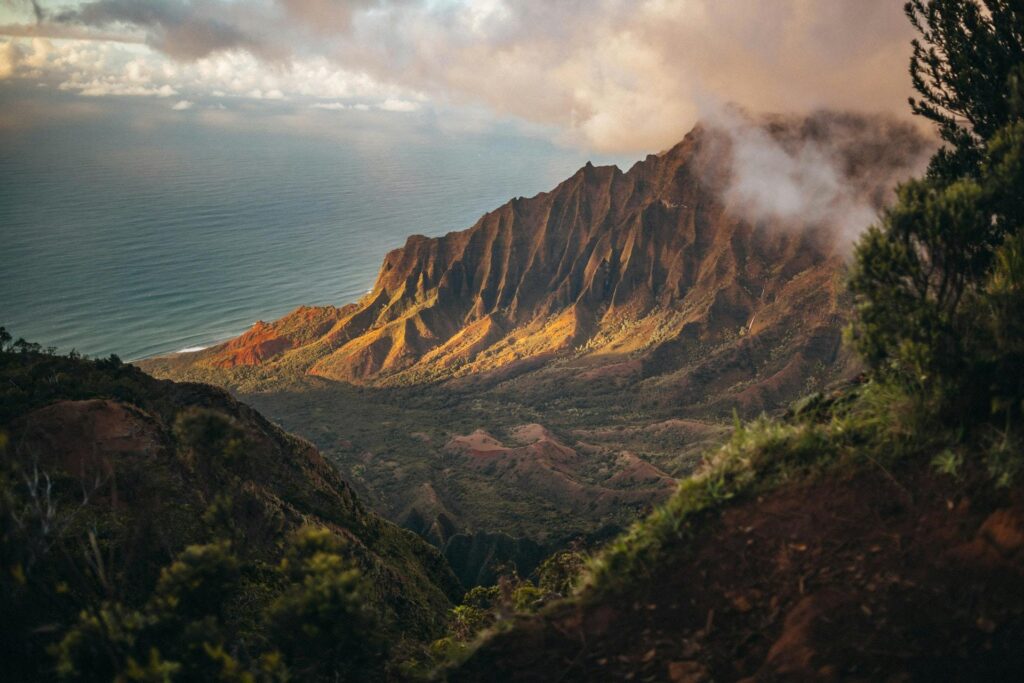
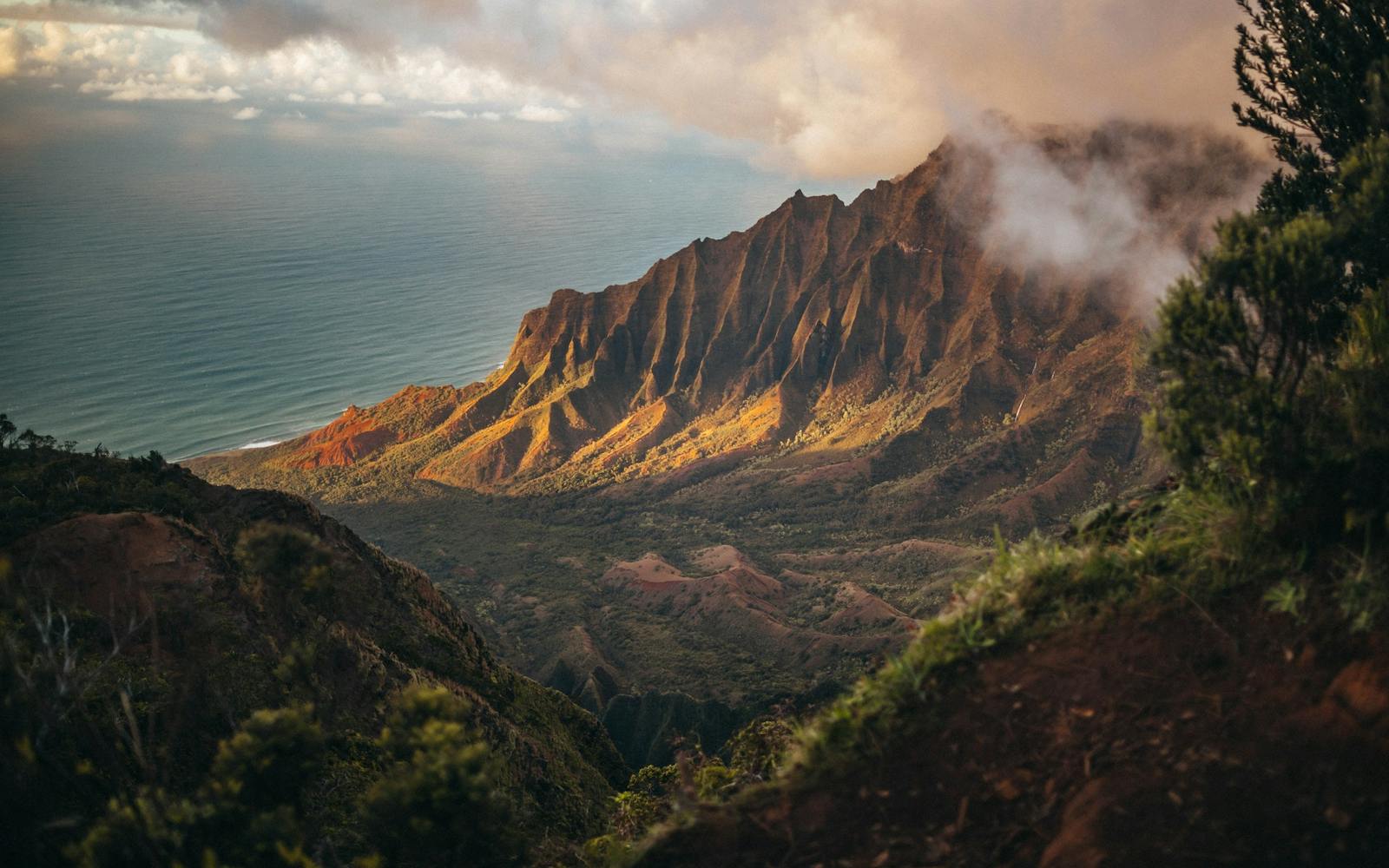
The mountainous coastline of Hawaii. Photo: Roberto Nickson/ Unsplash
People across America are using the Sustainable Development Goals as a road map to recover better by turning these global ambitions into local action. In Hawaiʻi, that means uniting communities around the tradition and spirit of aloha to accelerate progress on the SDGs and recover from COVID-19.
Bella Hughes remembers picking up seashells on Waimānalo Beach in Hawaiʻi as a kid. Today, she says her children pick up microplastics.
“Being from an island, our resources are precious,” the O‘ahu-born entrepreneur says. “You just cannot be from Hawaiʻi and not be hyper-aware of all of the pressing environmental concerns around you.”
It’s one of the reasons she and her husband launched Shaka Tea, which brews its tea using a superleaf called māmaki found only in Hawaiʻi. As the host plant for the state’s native and endangered pulelehua butterfly, māmaki can help restore the state’s ecosystem by providing habitats for the pollinators like these.
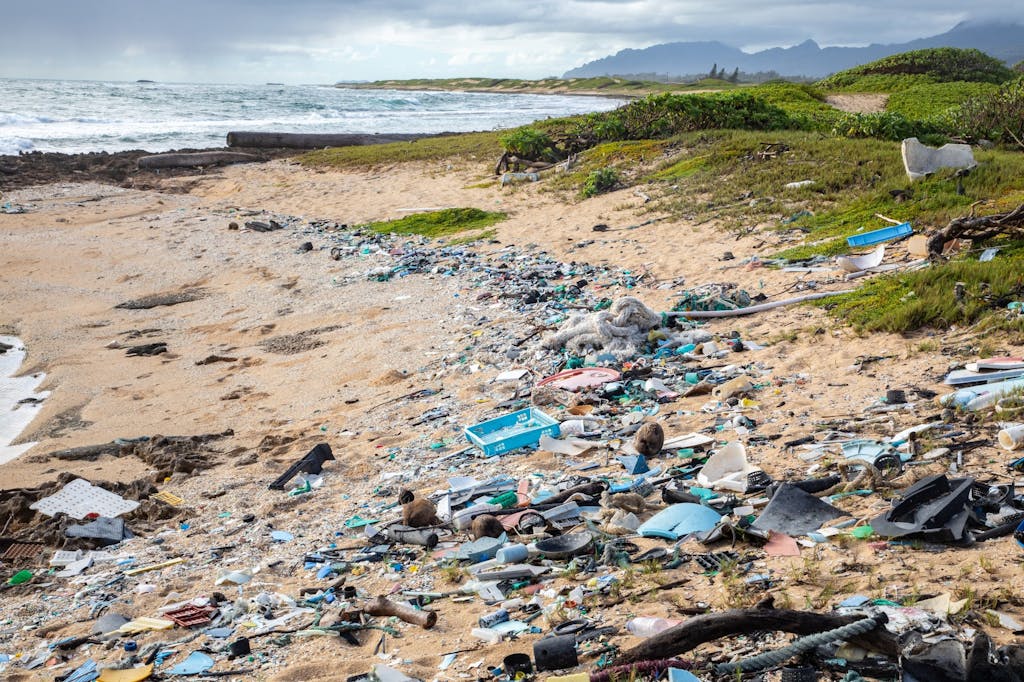
Plastics and other refuse on the Hawaiian shoreline. Photo: Raftography Sustainable Coastlines Hawaii
Bella says her business is built on the idea of sustainability and aloha — but not in the sense that some might think. For people like Bella who call Hawaiʻi home, aloha means much more than just “hello” or “goodbye.” It’s shorthand for the way of life and culture that makes the state unique and inherently committed to inclusive sustainability.
“It’s the goodness, the kindness, the humility, and the respect we wish to see in the world,” she says.
The company provided free māmaki seedlings to local farmers to kick-start the market and now sources directly from 18 small family farms, paying a guaranteed premium for each harvest. Their tea is locally manufactured, naturally sugar-free to keep the company’s diabetic consumers in mind, and priced to be affordable for lower-income households. It’s also SNAP-approved.
“Sustainability is rooted — first and foremost — in the environment, but it’s also about how you treat people,” Bella said.

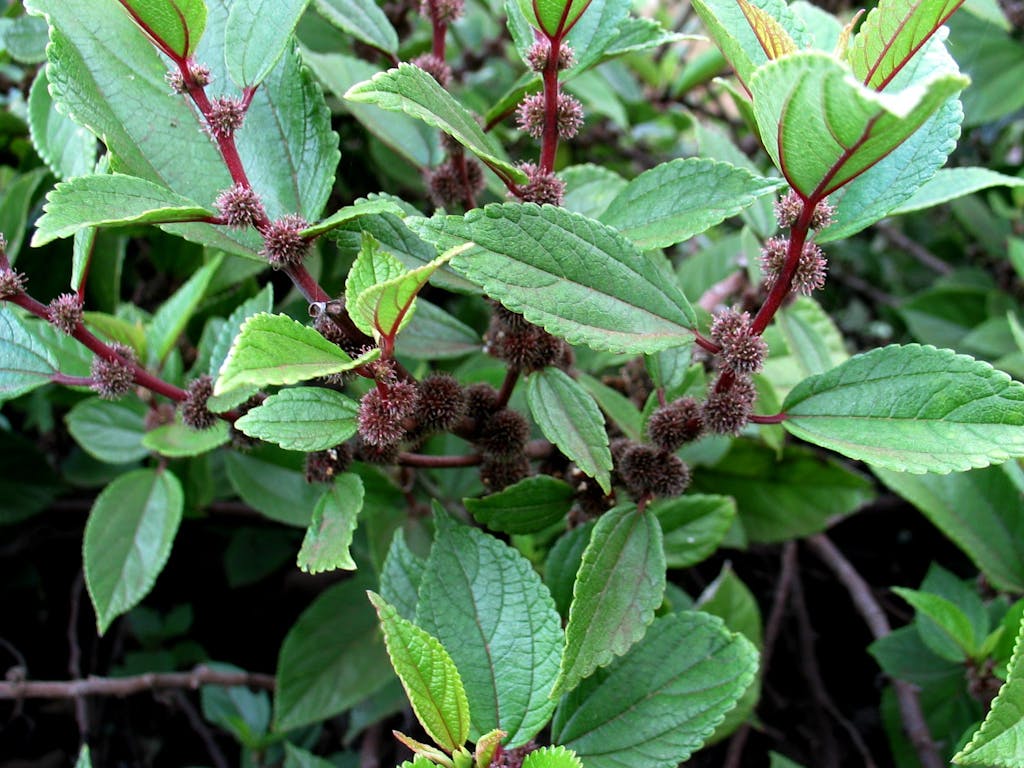
Māmaki — a superleaf found only in Hawaii — helps restore the islands’ ecosystem by acting as a natural host plant for the state’s native and endangered “pulelehua” butterfly. Photo: David Eickhoff
Problems in Paradise
The uniquely Hawaiian concept of aloha is one shaped by the state’s distinct biodiversity and geology. It’s home to some of the most breathtaking natural wonders in the world: pristine beaches, active volcanoes, rainforests, waterfalls, canyons, mountains, and the greatest number of climate zones in the world.
This unparalleled natural beauty draws more than 10 million visitors each year to Hawaiʻi’s shores, a flow that makes up approximately 20% of state revenue.
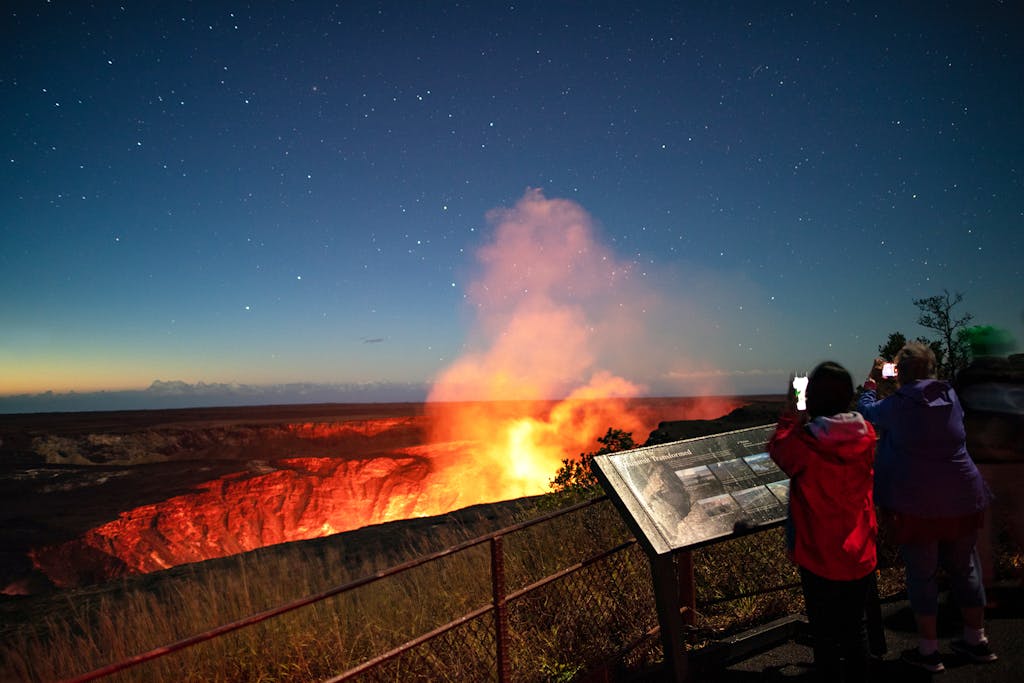
Hawaii’s unique ecosystem and geology include two of the world’s most active volcanoes – including the Kīlauea Volcano on the Big Island (pictured) – and 10 of the planet’s 14 climate zones. Photo: J. Wei/ National Park Service
When COVID-19 halted global travel in March 2020, Hawaiʻi suffered more job losses per capita than any other state. The economic fallout brought devastating disruptions and surreal scenes. Hundreds of unused rental cars filled the parking lot of an eerily empty sports stadium. Local food banks and homeless shelters drew a crush of people in need.
The pandemic’s impact in Hawaiʻi highlights a global pattern: In times of crisis, the vulnerable often suffer the most. Low-income households that depend on minimum-wage jobs were among the first to lose them. Most of the service jobs lost during the shutdown in Hawaiʻi belonged to women and people of color.
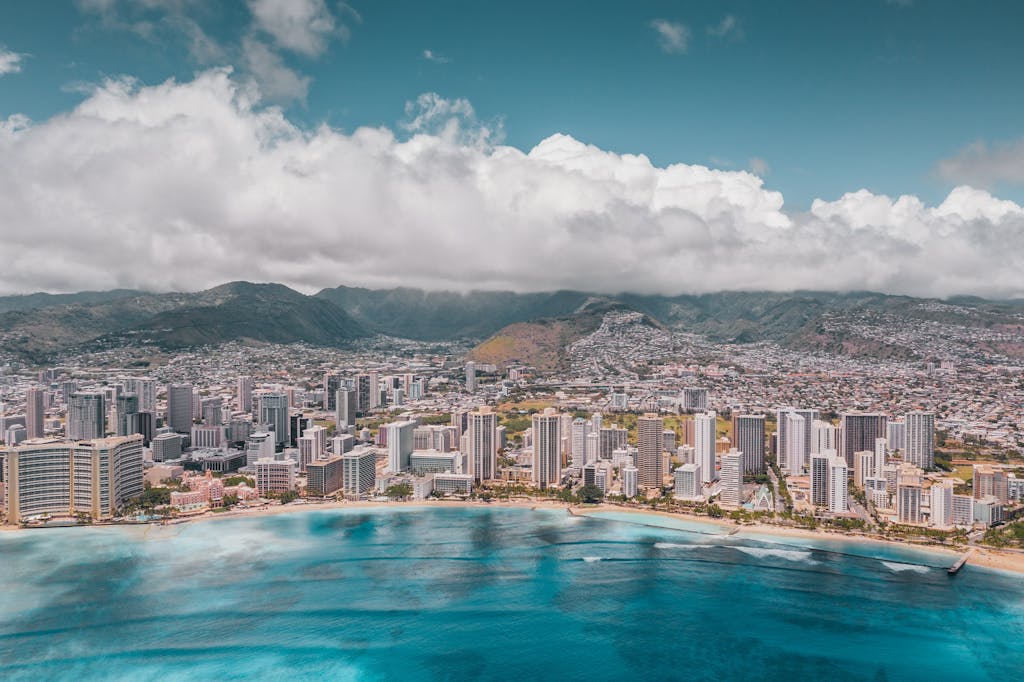
Skyline of Honolulu, Hawaii. Photo: Jess Vide
Yet even before the COVID-19 pandemic, there were problems in “paradise” — a phrase that has fallen out of favor among state residents since it obscures the native traditions that have protected the islands’ natural resources for generations, and ignores the systemic issues of inequality, poverty, and pollution that have arisen since western contact. Among these challenges is food security: Because it imports nearly 90% of its food, Hawaiʻi has the highest food prices of any U.S. state. At the same time, the Native Hawaiian community continues to face disproportionately higher rates of poverty, health problems, and mortality, according to state census results.
Hawaiʻi is also especially vulnerable to the effects of climate change. On the island of O‘ahu, more than 4,000 buildings are at risk of flooding due to sea level rise, according to the state’s Climate Commission.
So how is the state responding to some of the worst and most urgent consequences of climate change while grappling with the economic fallout of a once-in-a-century global pandemic? By using the moment for a green growth recovery through the Aloha+ Challenge, Hawaiʻi’s statewide sustainability commitment is also helping to achieve the Sustainable Development Goals, a set of 17 goals adopted by all UN member states to address poverty, hunger, inequality, and climate change. In fact, Hawaiʻi’s model was recognized by the UN as a sustainability ‘center of excellence’ or Local2030 Hub.
Just one month into the global shutdown, Hawaiʻi released the country’s first “Feminist Economic Recovery Plan for COVID-19,” recognizing that women were disproportionately bearing the brunt of the pandemic’s impact.
That was only the start of Hawaiʻi’s shrewd response. From community leaders and city mayors to business executives and the Governor, the Aloha+ Challenge is used throughout the state to tackle inequality, poverty, hunger, climate change, and disease.
Now Hawaiʻi is once again turning to the Aloha+ Challenge and SDGs in its battle against the coronavirus — a distinct but interconnected challenge for communities across the globe.
“If COVID-19 is inherently about disruption, then climate change is about a disruptive future,” says Celeste Connors, Executive Director of Hawaiʻi Green Growth Local2030 Hub, the public-private backbone partnership of the Aloha+ Challenge. “COVID-19 is a postcard from the future if we don’t achieve the SDGs within this decade.”
“The SDGs are our moonshot,” she continues. “We know we need to get there. The question is how.”
NURTURING GREEN GROWTH IN HAWAIʻI
“Imagine losing your job during a pandemic, and then you lose your health care. What are you supposed to do if you get sick?” It’s a question that Omar Sultan, a Hawaiʻi-based investor and founder of Sultan Ventures, found himself asking regularly on conference calls with members of the state’s business community in the shutdown’s immediate aftermath.
Many of them, he recalls, suggested waiting out the economic turbulence. “They can afford to wait it out,” he says. “But for everyone else, how do you wait it out when you can’t even put food on the table? When the unemployment office is so backlogged that they’re not getting checks?”
This is how the Aloha Connects Innovation (ACI) program was born. The program, designed by Omar and led by the Economic Development Alliance of Hawaiʻi, used federal COVID-19 relief funds to provide paid training opportunities for residents who had lost jobs from the economic disruption. The Hawaiʻi Green Growth network helped source these opportunities by conducting a statewide survey that identified opportunities to create an estimated 9,300 jobs for $585 million aligned with the SDGs in agri-tech, aquaculture, land conservation, and other “green growth” fields.
From September to December 2020, ACI provided wages, health benefits, and training opportunities — essentially paid apprenticeships — for nearly 650 job seekers. Importantly, the program offered financial incentives and support for participating businesses as well. In the end, the pilot project injected nearly $10 million into the state’s economy and demonstrated how Hawaiʻi can strengthen and diversify its economy through advancing the SDGs. Omar says an estimated 40% of the participants found full-time employment outside of the tourism industry as a result.
“The program was designed to tackle three things: help unemployed individuals with wages and health care, help local businesses get through these troubling times by providing labor and financial support, and help diversify the economy,” says Omar, who has garnered awards from the federal Small Business Administration and the U.S. Commerce Department for his innovative approach to economic growth, sustainability, and equity.
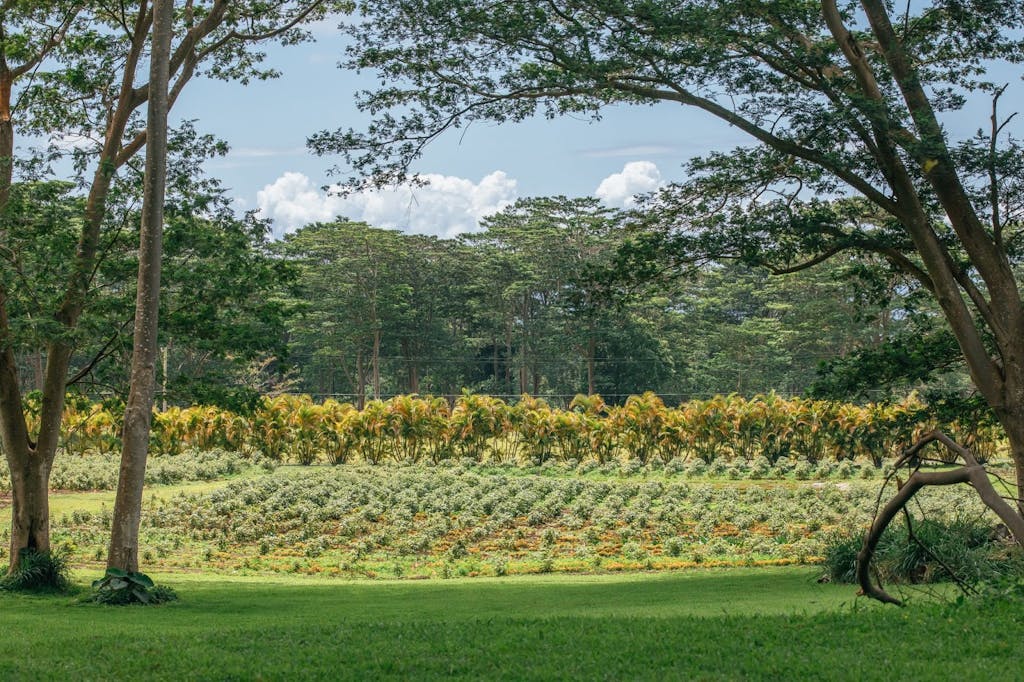
Rows of māmaki, a native superleaf found only in Hawaii, at one of the 18 local farms that is working with Bella Hughes to produce the leaves for her beverage company. Photo: Shaka Tea
Bella’s local business, Shaka Tea, was one of the more than 150 local businesses that participated in the program, bringing on a woman who had lost her restaurant job to train as a sales manager; she was hired full time earlier this year.
Another local business called Cropsticks leveraged the creativity of its expanded workforce to launch a campaign, dubbed “Let’s Stick Together,” that promoted its sustainable bamboo chopsticks. The company was created by Mylen Fe Yamamoto, a fourth-generation Japanese Filipino American born and raised in Hawaiʻi.
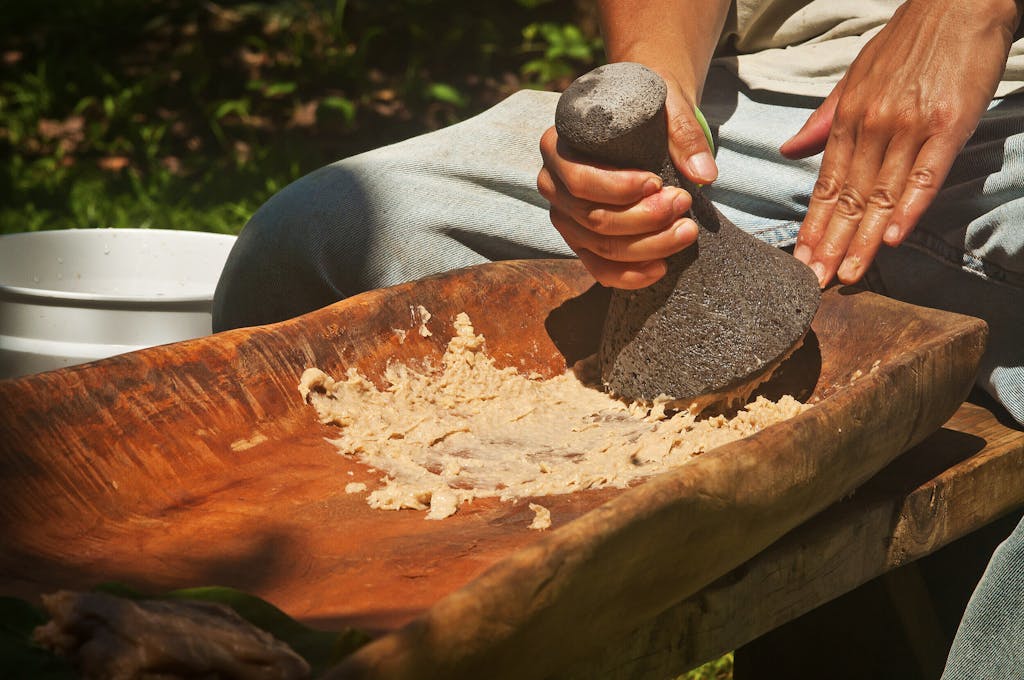
A worker prepares poi. Photo: Kahua Pa’a Mua
Another ACI participant, Keoni Kalanui-Malantan, gained experience and skills in organic farming and livestock care while working at Kahua Pa’a Mua, a nonprofit organization that nurtures agricultural entrepreneurship. During his apprenticeship, he helped plant more than 35,000 seedlings at a Kohala palm nursery, harvested local corn as part of an effort to feed kupuna (elders) in need, and learned basic veterinary care for chickens, pigs, and horses.
Omar says he designed the ACI relief program using the Aloha+ Challenge and the SDGs as its foundation. “Here’s a framework that the entire world is following, so let’s use that as our guiding light,” he says. “But let’s also do it in a way that’s very unique to Hawaiʻi.”
“The SDGs are our common language,” Hawaiʻi Governor David Ige said during a virtual discussion hosted by the UN Foundation and the Brookings Institution last fall. “Now we can align our canoes in the same direction,” he added, referring to the state’s seafaring origins; Polynesian voyagers arrived on the islands a millennium ago after navigating the Pacific Ocean using only stars and sails.
A FUTURE INSPIRED BY THE PAST
Even before planning a response to the challenges wrought by COVID-19, residents of Hawaiʻi were familiar with the complicated trade-offs and opportunities in aligning sustainability and economic growth. Community organizers and policymakers are still grappling with how to nourish the state’s economic diversity while protecting its natural biodiversity.

Today, the Aloha+ Challenge — He Nohona ‘Ae’oia — is grounded in Hawaiian host-cultural values like ‘ohana (family), aloha, kuleana (responsibility), and mālama (to steward). The Aloha+ Challenge was developed through a series of community meetings designed to bring diverse people and perspectives together, providing a national and global model of a consensus-driven effort to deliver the SDGs at the local level.
“There would be a fisherman sitting next to the CEO of a major airline, or an environmentalist sitting next to tourism industry representatives or a student sitting next to an elder.” Celeste of Hawaiʻi Green Growth says. “They say you measure what matters, so we connected with diverse partners across business, government and civil society to find out what matters to our community.”
Pono Shim, President and CEO of the O’ahu Economic Development Board, says the key to the state’s economic growth can be found in the traditional native Hawaiian wisdom that has been passed down for generations. He grew up learning about the sacred philosophy of aloha — akahai (grace), lōkahi (unity), ʻoluʻolu (tenderness), haʻahaʻa (humility), and ahonui (patience) — from Aunty Pilahi Paki, the revered Native Hawaiian elder responsible for enshrining the concept in state law in 1986.
“Most people are doing projects instead of focusing on people, and that’s the problem,” Pono says about what makes programs like ACI unique. “Solutions are not necessarily useful until we know how to connect with each other on a deeper level.”
In a message to his friends and colleagues earlier this year announcing the program’s launch, he imagined a post-coronavirus future that harkens back to the island’s distinct origins and traditions:
“What might we create because we are a community that has a higher tolerance and acceptance of differences in people? What might we design as a community that has lenses of creativity and innovation because of our limited natural resources and geographic isolation? What might we accomplish because we are a community that shares and is much more relational than transactional in culture?”
Pono Shim
President and CEO of the O’ahu Economic Development Board
FROM RIDGE TO REEF
The results of this kind of local collaboration have been impressive. The state was the first to ban plastic bags in grocery stores. They brought together airlines and environmentalists to establish a carbon offsets project at an 8,000-acre forest reserve on the Big Island and created a “Green Your Business” initiative that led to a statewide energy savings of more than 4 million kilowatt-hours — enough electricity to power over 600 homes for a year.
The state has also invested in other nature-based solutions to climate change, such as planting drought-resistant flora along the coastline to protect against erosion and flooding. Meanwhile, local schools are embracing nature-based education — known in native Hawaiian as aina (land) — to educate students and residents alike about the islands’ culture, history, and ecosystem.
The state’s “ridge to reef” approach takes a holistic view of human activity on the land and water and how it affects the entire ecosystem. It’s a viewpoint that reflects the intersectional lens of the global SDGs while still taking its inspiration from native Hawaiian culture.
“Sustainability is not a new concept. It dates back a thousand years,” Celeste says. “The Native Hawaiian Ahupua’a system was a highly sophisticated, incredibly resourceful, and high-yield approach to managing the islands’ limited resources. It continues to serve as a model today.”
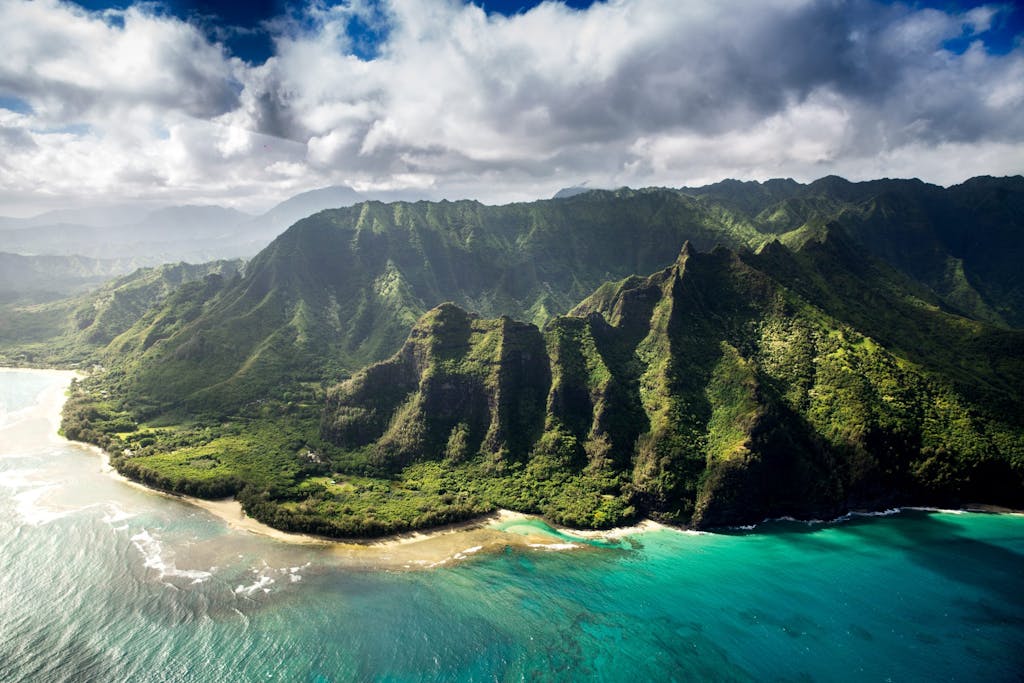
A view of the Hawaiian coastline. Photo: Braden Jarvis/ Unsplash
In 2014, for example, a Native Hawaiian organization called the Hui Makaʻāinana o Makana helped establish a protected marine area that later won the UN’s Equator Prize for its Indigenous-led, subsistence-based approach to wildlife management. The area, which stretches 3½ miles across the Hāʻena coast, is managed using traditional ecological knowledge, such as the designation of a pu‘uhonua, or sanctuary area, and prohibits the use of spear guns, night diving, or lay nets to preserve the local fish supply.
What makes the SDGs distinct is how they can serve as a common language to unite efforts across issues and a universal road map to track progress. This means shared goals and metrics that help strengthen and coordinate action among sectors, communities, states, and countries.
Hawaiʻi is the first state in the country to report its progress on the SDGs. The state’s Voluntary Local Review pulls data from metrics that were co-developed by partners across Hawaiʻi’s four main counties during a four-year process.
This data is collected locally and shared via the Aloha+ Challenge dashboard, an online open-data platform that supports transparency, accountability, and collaboration. Together, public and private sector partners, and community groups continue to update the data, identify new metrics, and establish priorities based on trends revealed by the dashboard.
BRINGING THE SDGS HOME TO HAWAIʻI
While the response to COVID-19, climate change, and other disasters will require collaboration and innovation, the solutions will look different in every community.
“If we want the SDGs to succeed, we need to connect these goals to the community and the individual to drive changes in behavior,” says Celeste Connors of Hawaiʻi Green Growth. “Kids growing up in Hawaiʻi and islands have an inherent understanding of sustainability and it’s about creating the pathways for them to realize they are key to the solution.”
In Hawaiʻi, that means reevaluating how the state measures progress by considering local values like keiki (child) and kupuna (elder) time, a native Hawaiian tradition of family and intergenerational connection. In 2018, Hawaiian lawmakers enacted legislation to include genuine progress indicators like these to complement more conventional metrics like gross domestic product (GDP).
One thing is clear: In Hawaiʻi as elsewhere, the sustainable use of resources — its people, land, and water — will be crucial for environmental and socioeconomic resilience.
This is particularly true for island nations, which have long led the sustainability movement. Hawaiʻi’s Aloha+ Challenge, for instance, was inspired by the pioneering efforts of the Micronesia Challenge in 2006, a political commitment from the leaders of the Federated States of Micronesia, Guam, Marshall Islands, Northern Mariana Islands, and Palau to conserve at least 30% of the near-shore marine resources and 20% of the terrestrial resources across Micronesia by 2020. In 2019, island economies across the globe – including in Hawaiʻi – launched the Local2030 Islands Network, which aims to advance the SDGs through island-led solutions. The Network held an event during the 2021 High-Level Political Forum (HLPF) on Sustainable Development where island leaders announced support for new island-led communities of practice on renewable energy, SDG implementation, and efforts to strengthen the relationship between climate action and the protection of marine environments.
By advancing the SDGs in a locally and culturally appropriate way to reflect the spirit and values of the people who live and work in Hawaiʻi — including its unique tradition of aloha — community leaders like Bella, Omar, Pono, and Celeste are bringing the SDGs home. The concept of “aloha” has even been enshrined in state law.
This work continues a legacy that began 1,000 years ago when Polynesian voyagers first arrived on the islands. Then as now, respecting the island’s natural resources — and each another — was the only way to survive.
It’s an insight reflected in a traditional Hawaiian proverb, Ka Mauli o ka `Āina a he Mauli Kānaka: “The life of the land is the life of the people.”
This conversation is part of a larger project launched by the UN Foundation and the Brookings Institution to build and support American Leadership on the SDGs.
Sign up for our monthly newsletter to receive information about upcoming events, news, and stories that highlight American Leadership on the SDGs.

